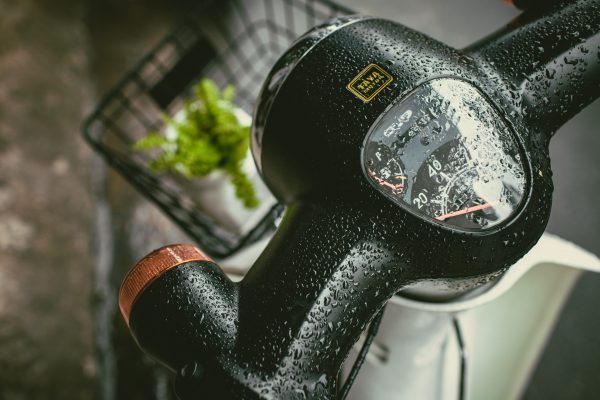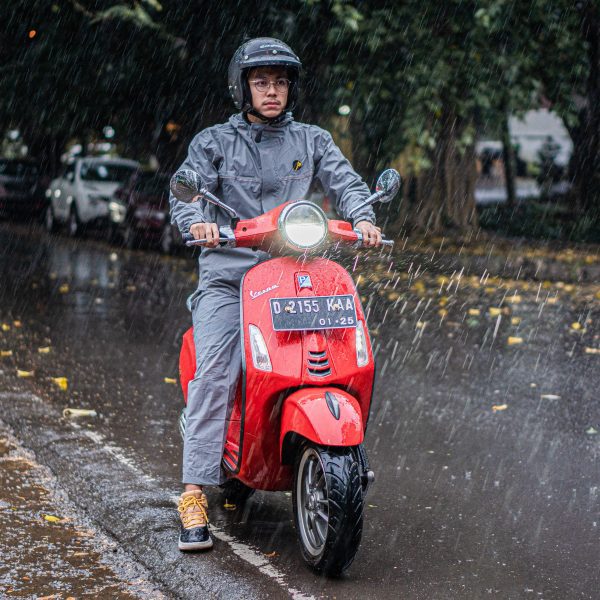We all know how fun and convenient scooters can be, but they also come with their fair share of challenges – especially when the weather turns unpredictable.
Whether it’s blazing hot, pouring rain, cold, or gusty winds, we’re here to guide you through riding your scooter bikes safely in any weather with help from FamilyHype.
We understand that changing conditions require unique precautions and preparations. From understanding your scooter’s capabilities to knowing what gear to wear, dress appropriately and how to navigate through various conditions, we’ve got you covered.
It’s not just about staying safe on the road; it’s about ensuring a fun ride too! We encourage our readers to comment and share their scooter safety experiences and tips, and if you’re feeling extra generous, don’t forget to give us a shout-out on social media!
And let’s not forget the importance of regular maintenance checks regardless of the weather. From checking tire pressure to lubricating moving parts, it’s important to regularly inspect your vehicle to ensure a safe and enjoyable ride.
After all, our goal at FamilyHype is to serve you by providing safety tips on how to ride during bad weather. So buckle up as we embark on this journey towards mastering scooter-safe rides in all weathers together!

Key Takeaways
- Changing weather requires unique precautions and preparations
- Regular maintenance checks for a safe and enjoyable ride
- Wearing a helmet is important for safety
- Reduce speed and be cautious on slippery surfaces
Understanding Your Scooter’s Capabilities In Changing Weathers
It’s crucial to know your scooter’s limits, as it can handle a bright sunny day but not a blustery, rainy one. Understanding the performance limitations of our scooters in varying weather is essential for both safety and enjoyment.
Scooter customization can help us adapt to these changes, but it doesn’t entirely replace an understanding of how weather affects our rides. Rain can reduce visibility and make roads slippery, challenging even seasoned riders. On hot days, scooters may overheat if not properly maintained.
By gaining knowledge about our scooter’s capabilities in different weather scenarios, we are better equipped to serve our communities safely and effectively. As we move forward together toward safer riding experiences, let’s now focus on tips for handling those sweltering summer days on the road.
Preparing For Hot Weather Rides
When the sun’s blazing, you’ve got to take extra steps to stay cool and comfortable during your two-wheeled tires adventures. We can’t stress enough the importance of hydration strategies and sun protection. Always have a water bottle handy and drink frequently to replace the fluids lost due to sweating in hot weather. You’d be surprised how much a simple hat or cap can help shield your head from direct sunlight.
Don’t forget about applying sunscreen on exposed skin areas before you set off on your scooter ride. This will not only prevent painful sunburns but also reduce the risk of skin cancer over time.
Now, while we all love a good sunshine-filled ride, let’s prepare ourselves for those days when rain clouds decide to join us too.

Navigating Through Rainy Days
As we steer our discussion towards navigating through rainy conditions, it’s crucial to understand the risks and challenges that come along with it.
We’ll delve into practical precautions you can take and safety measures that need to be in place to ensure a safe ride even when the weather is less than ideal.
Remember, being well-prepared and cautious gives us more control on the road and significantly reduces potential hazards.
Understanding The Risks
Navigating through different weather types on your scooter can be quite an adventure, but you’ve got to understand the risks involved to ensure a safe and enjoyable ride. Our risk perception, often underestimated, is heavily influenced by weather. We must consider several factors:
- Wet roads increase the risk of skidding or slipping.
- Poor visibility in foggy or snowy conditions can hinder our ability to react swiftly.
- Harsh winds may compromise balance and control over the vehicle.
Understanding these potential dangers allows us to better prepare for them, reducing their impact on our safety while out riding. It’s crucial not just for ourselves but also for those we share our paths with.
Now that we’re clear about the risks let’s move into how we can mitigate them with precautions and safety measures.

Precautions And Guidelines
You’ve got this, even when the going gets tough and the weather plays rough, as long as you take the right precautions. We cannot stress enough how important it is to wear a helmet; it’s your first line of defense against injuries. Ensure it fits snugly and meets safety standards.
Next, let’s talk about night visibility. Illumination is critical when riding in low-light conditions or at night. Invest in front and rear lights for your scooter, and consider reflective clothing to ensure you’re seen by other road users.
When rain makes surfaces slippery, reduce speed and be extra cautious on turns. And remember, we’re here to support each other – sharing the road safely is a collective responsibility.
Heading into winter? Let’s now prepare for cold weather and snow rides!
Dealing With Cold Temperature And Snow
Bracing the chill on your scooter ride can be a thrilling experience, but it’s essential to keep safety at the forefront when dealing with cold weather and snow.
We understand that you might want to enjoy your scooter in every season, and we’re here to provide winter gear recommendations that will ensure you stay warm while still maintaining control of your vehicle. From thermally insulated gloves for optimum grip to eyewear preventing fogging or frosting, selecting appropriate attire can make all the difference.
Moreover, mastering ice avoidance techniques is crucial. Learn how to identify icy spots and avoid sudden braking or turns on these surfaces. Remember, caution is paramount during such conditions.
As we navigate through these challenges together, let’s also prepare ourselves for another weather obstacle – maneuvering in windy conditions.
Maneuvering In Windy Days
When gusts of wind start to challenge your journey, it’s not just about keeping warm but also maintaining control and balance on your scooter. The wind impact can be severe, making riding an electric scooter tricky and potentially dangerous for riders.
We must adjust our speed control accordingly to counteract the unpredictable movements caused by windy conditions. We need to lean into the wind while being prepared for sudden changes in its direction or intensity. Keep an eye out for open areas where winds get stronger and always remember, safety comes first. If the winds are too strong, consider alternative transport methods, especially if you’re riding an electric scooter.
Ensuring a safe ride in any weather type requires more than just proper handling techniques; it calls for regular maintenance checks and vigilance with safety protocols, regardless of what Mother Nature throws at us next.
Regular Maintenance And Safety Checks Regardless Of Any Season
Maintaining your two-wheeler isn’t just about fixing a flat tire or oiling the chain, it’s an ongoing commitment that significantly impacts your ride’s performance and your well-being. No matter what the weather throws at us, we need to ensure our electric scooters are in top shape.
- Brake Assessment: Regularly assess your scooter’s brake system. It’s crucial for our safety and others around us. A damaged or worn-out brake can lead to accidents.
- Tire Monitoring: Keep an eye on tire pressure and tread depth regularly. Riding an electric scooter on under-inflated tires puts more strain on the scooter, while over-inflation can cause poor traction.
- General Inspection: Check lights, horns, and mirrors for any damage.
In essence, consistent maintenance makes every ride both fun and safe, regardless of any weather!
Conclusion
In conclusion, at FamilyHype, we understand the importance of scooter safety during different weathers. By understanding our scooters’ capabilities and prepping for hot, rainy, cold, or windy conditions, we can ensure a fun and safe ride.
Regular maintenance and safety checks are key, so don’t forget to plan and be prepared! With the right preparation, you and your scooter can still enjoy your ride, no matter the weather.
We would love to hear your thoughts on scooters and the importance of safety in all weather. Share your feedback with us! Also, be sure to check out other articles related to scooters, like motorized scooters, electric scooters, and folding scooters, to name a few. With these tools, you can get the most out of your scooter experience no matter the weather.
Frequently Asked Questions (FAQs)
Is It Safe To Ride A Scooter In The Rain?
It is generally fine for your scooter to operate under light rain or moderately wet conditions. However, it is advisable to avoid riding your electric scooter through heavy rain, deep puddles, or floods. Always pay attention to weather conditions before riding your electric scooter.
Can I Leave My Scooter Outside In The Rain?
Leaving a scooter in the rain is never a good idea, you should always park it in a covered area for protection or cover it with a tarp. Even a rainproof electric scooter can get damaged if you leave it outdoors in inclement weather.
What Are The Safety Issues With E-Scooters?
It is important to consider your safety and take precautionary measures in riding your electric scooter before you even get into an accident. The most frequent injuries suffered by e-scooter riders were closed head injuries, concussions, and lacerations, with the most commonly broken bones being the skull and nose, each at 27% of all cases. Protective gear and adherence to safety tips can go a long way in minimizing these risks.
How Do I Protect My Scooter From Water Damage?
The best practice is to park your electric scooter in a dry space. If no dry areas are available, make sure to cover it with a waterproof cover to protect the electrical components and maintain good contact with the ground.
What Do You Wear On A Scooter In The Rain?
To protect yourself from the rain, you should wear a raincoat or any waterproof protective gear of your choice, as long as it keeps you dry while riding your electric scooter in inclement weather.
Can You Leave A Scooter In The Sun?
You have to avoid leaving your electric scooter under the sun when you are not using it because the heat might cause damage to the electrical box and malfunction when you use it.
How Do You Start A Scooter After Rain?
First, you want to remove the battery in this case to avoid electric damage. Your scooter should start once you reattach your batteries and start it slow. Check the ignition system- If your bike is not starting after rain, another potential cause is that your ignition system is wet. The inductor and the switches are two sites that can cause problems.
Can You Ride A Scooter In The Cold?
Yes, you can ride an electric scooter in the cold, but it will be a challenging experience, especially on snow-covered pavements. Proper preparation and protective gear are essential.
What Is The Environmental Impact Of E-Scooters?
When in use, the environmental impact of electric scooters is minimal. They run on batteries, thereby producing zero emissions and contributing to better air quality and reduced urban congestion.
Are E-Scooters Environmentally Friendly?
Electric scooters are one of the most environmentally friendly modes of transport. They produce some greenhouse gases, but every way of getting around does, including walking.
Last Updated on July 21, 2023 by Allen Laconsay
DISCLAIMER (IMPORTANT): This information (including all text, images, audio, or other formats on FamilyHype.com) is not intended to be a substitute for informed professional advice, diagnosis, endorsement or treatment. You should not take any action or avoid taking action without consulting a qualified professional. Always seek the advice of your physician or other qualified health provider with any questions about medical conditions. Do not disregard professional medical advice or delay seeking advice or treatment because of something you have read here a FamilyHype.com.